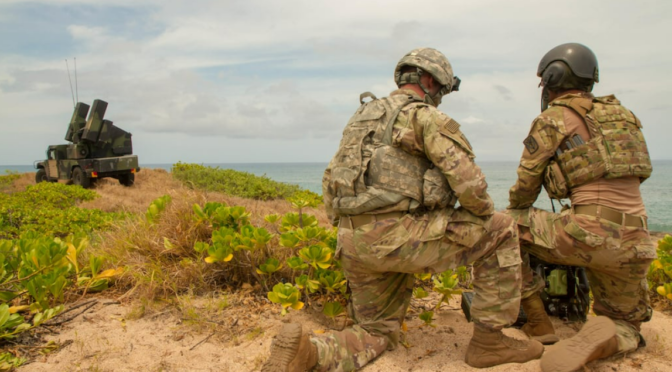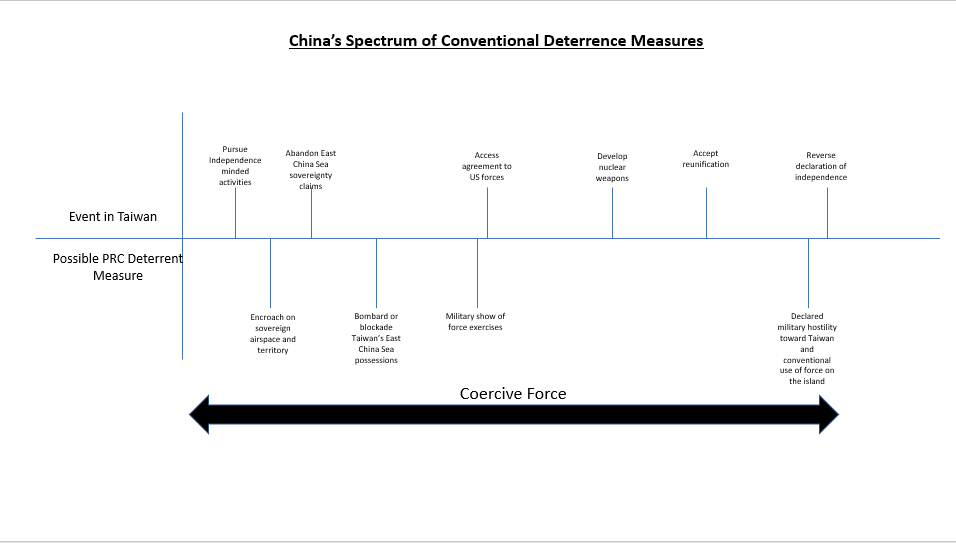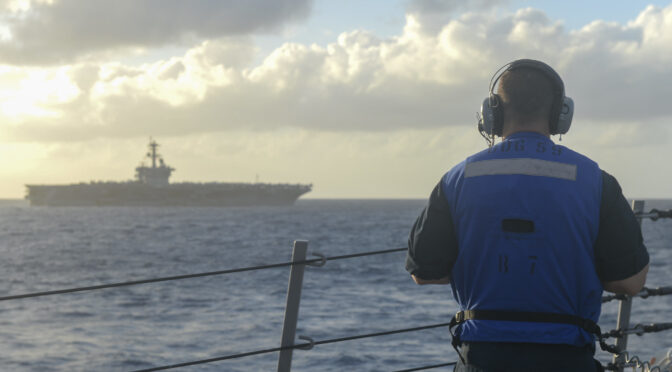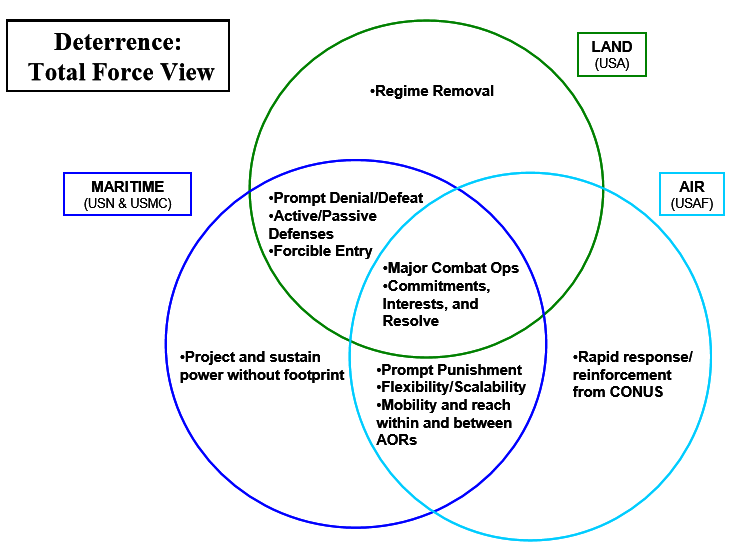By Major General James B. Bartholomees III
Chinese Coast Guard vessels are ramming Philippine Coast Guard ships at an alarming rate in the South China Sea. Chinese military planes are increasing dangerous intercepts with U.S., Allied and partner planes over the international waters of East Asia. While the high-profile use of military ships and planes is concerning, China is building and training a joint military force designed with one overarching objective in mind—to seize land areas from its neighbors.
U.S. naval and air forces have been contesting China’s maritime and air threats for years. But they alone cannot deny China the ends of its military strategy either through gray zone tactics or use of force. With significant U.S. Army investments in long range fires systems, and lessons of harsh ground combat in the war in Ukraine, the role of land forces in the Indo-Pacific is becoming more apparent. To deter China from seizing terrain as part of the long-term strategic competition, while assuring our regional allies, U.S. Army Pacific is complementing maritime and air forces by improving the ability to defend key terrain, including the sovereign territory of the United States and its Allies. This can be accomplished by increasing the scale and frequency of campaigning activities forward in the region involving long-range fires systems, pre-positioning equipment and supplies, and capitalizing on favorable policy developments.
U.S. Army Pacific is strengthening its multi-domain capabilities to support joint operations in the Indo-Pacific region. By increasing the scale and frequency of campaigning activities, namely regional exercises that involve long-range fires systems, the Army aims to bolster Allies’ and the joint force’s abilities to counter maritime and air threats. This approach, developed through the U.S. Army’s multi-domain operations doctrine and implemented by newly formed Multi-Domain Task Forces (MDTFs), integrates land-based offensive and defensive capabilities with space, cyber, electronic warfare, and information operations.
Recently a Multi-Domain Task Force deployed its new Typhon Mid-Range Capability to Northern Luzon in the Philippines. Typhon is a mobile land-based anti-ship missile system capable of launching the Navy’s SM-6 and Tomahawk missiles. Typhon offers complementary capability to the Philippines’ BrahMos antiship missile batteries coming online. The deployment demonstrated U.S. commitment to a mutual defense treaty ally faced with escalating threats. This is particularly important as the Armed Forces of the Philippines shifts its focus from counterinsurgency operations in Mindanao to a new strategy of comprehensive archipelagic defense. MDTFs are also employing terrestrial sensors, high-altitude balloons, and deep-sensing platforms in the Indo-Pacific.

This new formation is applying lessons from recent conflicts in Ukraine and the Middle East to drive experimentation with advanced technologies. This strategy enhances U.S. military effectiveness and empowers Allied nations with capacity to develop their own land-based long-range fires capabilities—critical for defending their sovereign areas—contributing to a more robust regional defense posture against potential adversaries like China.
U.S. Army Pacific is positioning critical sustainment equipment and supplies in Allied nations so that the U.S. is ready to meet its mutual defense treaty obligations and support U.S. joint forces. The tyranny of distance from the Continental United States to the “First Island Chain” of Japan – Taiwan – Philippines requires positioning essential equipment and supplies before any fast-moving crisis. For contingency purposes, the Army has pre-prepositioned stocks across the globe in locations such as the Middle East, Poland, Japan and Korea. These pre-positioned stocks provide a unique set of sustainment capabilities to the joint force to include Common User Land Transport (CULT), ship-to-shore fueling capability, bulk water purification and storage, vertical and horizontal engineering, field feeding, maintenance services, contracting and large-scale medical capabilities across a host of disciplines.
The Army also provides watercraft and causeways that the joint force relies upon for intra-theater sealift as well as ship-to-shore movements. U.S. Army Pacific is equipped with purpose-designed, theater-enabling commands to run these functions in support of the joint force, Allies and partners. For exercises and deployments, pre-positioned equipment and supplies in critical locations reduce commercial vessel movement costs and support the economies of vital U.S. Allies. Pre-positioning equipment and supply in the Philippines and Australia, for example, rather than on ships at sea, also enables the U.S. joint force to respond faster and more effectively to their international humanitarian assistance and disaster relief needs during natural events such as cyclones, typhoons, floods and landslides. Investment in pre-positioned equipment and supplies on our Allies’ soil allows the U.S. military to provide a range of options to protect and safeguard our friends in the region.
The U.S. Departments of Defense and State have matured existing policy agreements with many countries allowing the Army to tangibly improve the joint force’s ability to meet Mutual Defense Treaty obligations. The new reality of China’s land seizure capability combined with their increasing ties with Russia have informed our diplomatic and military support to allies and partners. Current agreements provide sufficient authority to increase exercise scope and duration as well as storage of military equipment and supplies, but often nations choose to support agreements based on their political will.
Persistent engagement, collaboration, and routine communication are critical to earning and maintaining our allied and partner militaries’ trust. From information sharing with the Philippines on maritime threats to their economic exclusion zones, to network development with the Japanese in command post exercises and missile defense, the U.S. Army is building trusting relationships. In stark contrast to China’s bullying tactics, the U.S. Army works with local populations and governments to gain and retain freedom of action in the competitive space, giving joint and combined forces an edge should they have to transition to crisis or conflict.

Critics will question why allies and partners would be willing to grant access and basing short of a crisis. Because they will seek support when we least expect it – and we must be strategically vigilant in positioning forces and equipment ahead of a crisis. In competition short of war, land forces translate political legitimacy into military advantage through campaigning: the logical and sequential arrangement of operations, activities, and investments. These recommendations position U.S. Army forces to support Allies in anticipation of their requests for assistance, and at the invitation of the host nation under existing agreements. These simple actions strengthen our critical alliances – a value that China fails to bring into any of its transactional relationships.
Former Chairman of the Joint Chiefs of Staff, General (retired) Mark Milley believed that “preparing for war is expensive,” but “there is nothing more expensive than fighting a war.” The forementioned costs would be far less than U.S. blood and treasure spilled in conflict with China. General Flynn, Commanding General, U.S. Army Pacific, often reiterates that “our goal is no war.” To protect our allies and prevent another future conflict, U.S. land forces must complement maritime and air forces by increasing the scale and frequency of exercises involving long-range fires systems, pre-positioning equipment, and capitalizing on policy developments. U.S. air and sea power alone will not deter. Controlling physical land areas and nonphysical areas (e.g., human and information dimensions) directly supports freedom of the seas, in times of competition, or command of the sea in wartime. Alongside Marine Corps stand-in forces and U.S. special operations forces, Army forces can help secure key terrain in maritime Asia. Land force integration is essential to preventing war and winning the long-term strategic competition in the Indo-Pacific.
Major General James B. Bartholomees III currently serves as the Chief of Staff of U.S. Army Pacific. He previously served as the Operations Officer of U.S. Army Pacific and his previous commands include the 173rd Infantry Brigade Combat Team (Airborne) and 2d Battalion, 75th Ranger Regiment. MG Bartholomees holds a Bachelor of Science in Civil Engineering from the United States Military Academy and a Masters in National Strategic Studies from the U.S. Army War College.
References
ADM Samuel J. Paparo, USN, U.S. Indo-Pacific Command Change of Command speech, Pearl Harbor, Hawaii, (May 3, 2024).
Josh Luckenbaugh, “Army Has Role to Play in Air Force’s Agile Combat Concept,” National Defense Magazine (September 12, 2024).
General Charles Flynn and Lieutenant Colonel Timothy Devine, “Mobilize Land Power to Contain China’s Maritime Ambitions” USNI Proceedings (September 2024).
“2022 National Defense Strategy,” U.S. Department of Defense.
Doll, A., et al., The Backbone of U.S. Joint Operations: Army Roles in the Indo-Pacific, Rand (May 5, 2023).
Frederick, B. et al. Understanding the Deterrent Impact of U.S. Overseas Forces, Rand (February 4, 2020).
Chris Panella, “The US Army put on a sudden show of force out on the far edge of Alaska to send the message it can as Russia and China partner in the Pacific,” Business Insider, (September 14, 2024).
Watts, S., et al., Assessing the Value of Overseas Military Campaigning in Strategic Competition, Rand (December 13, 2022).
Wong, J. P., et al., New Directions for Projecting Land Power in the Indo-Pacific: Contexts, Constraints, and Concepts, Rand (December 20, 2022).
Featured Image: Soldiers observe a live fire during Rim of the Pacific 2018 at Pacific Missile Range Facility Barking Sands. (Sgt. 1st Class Claudio Tejada/Army)






